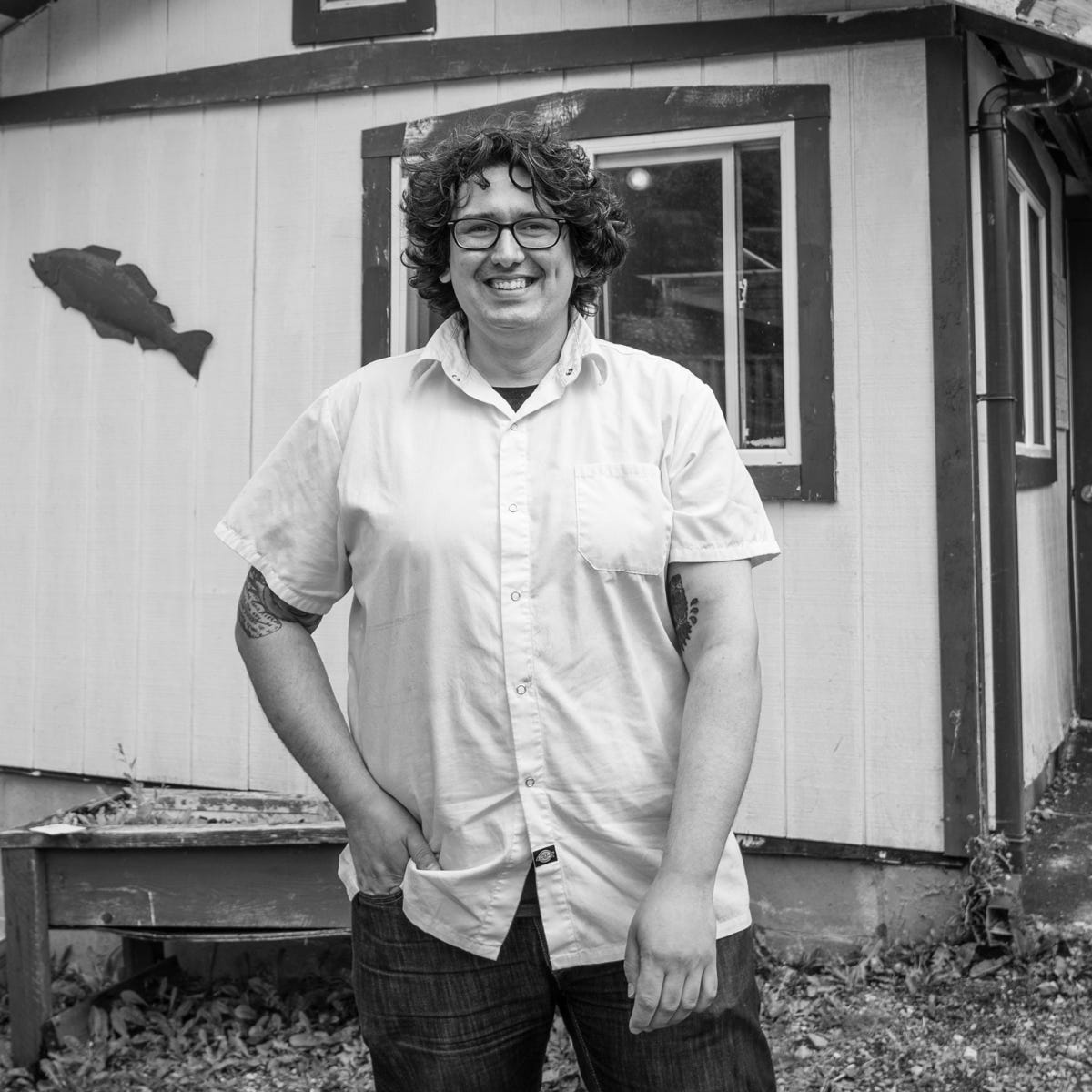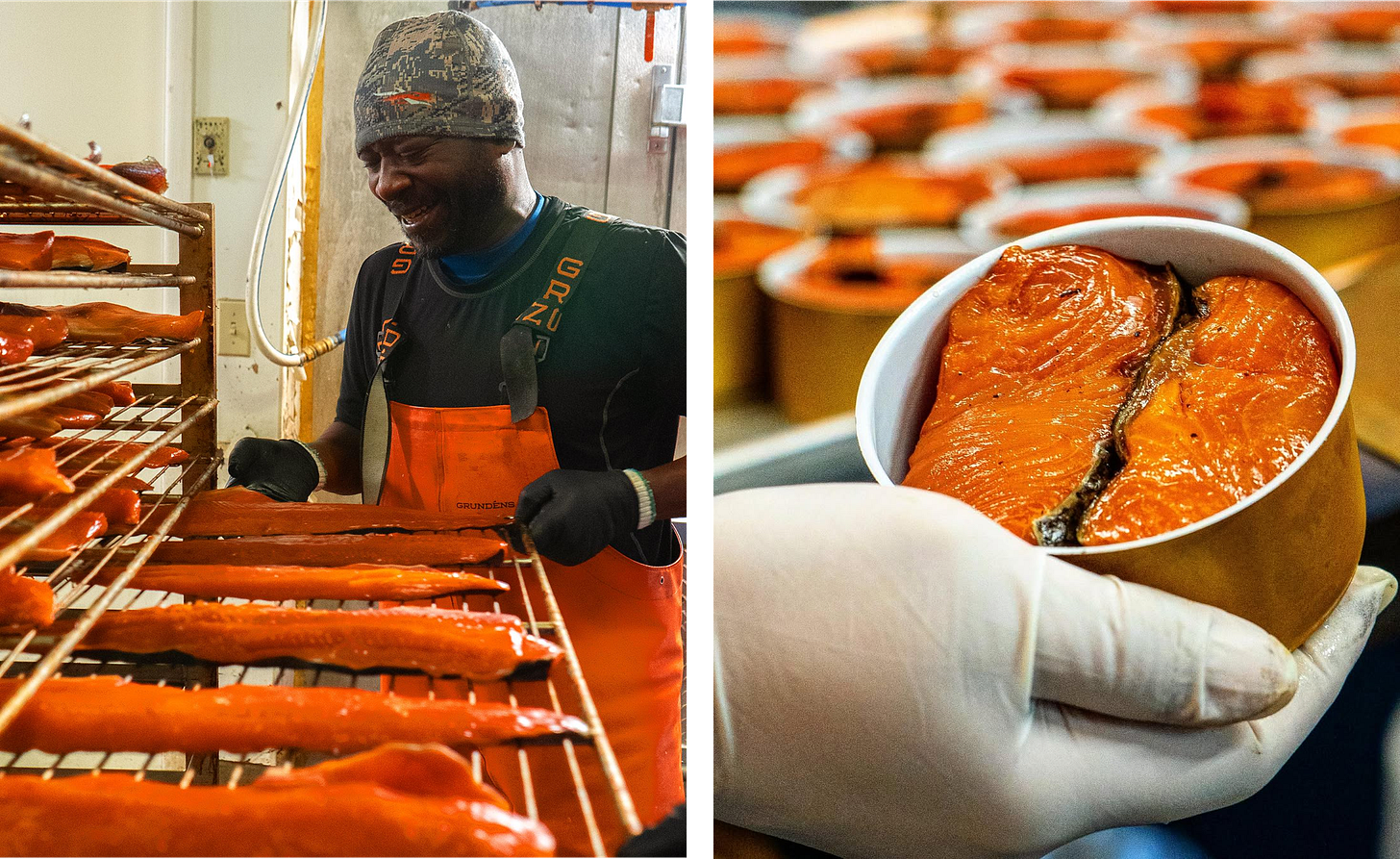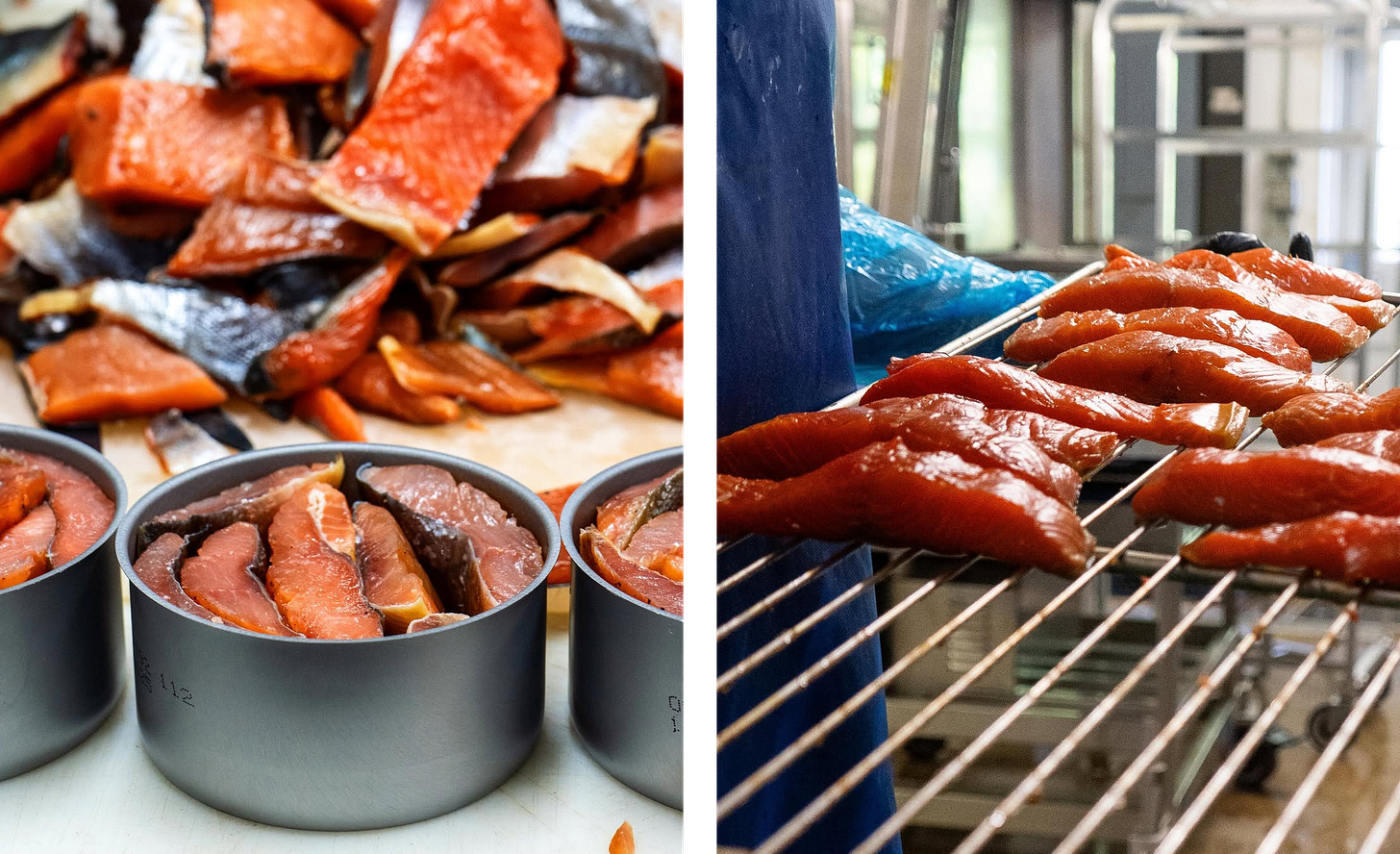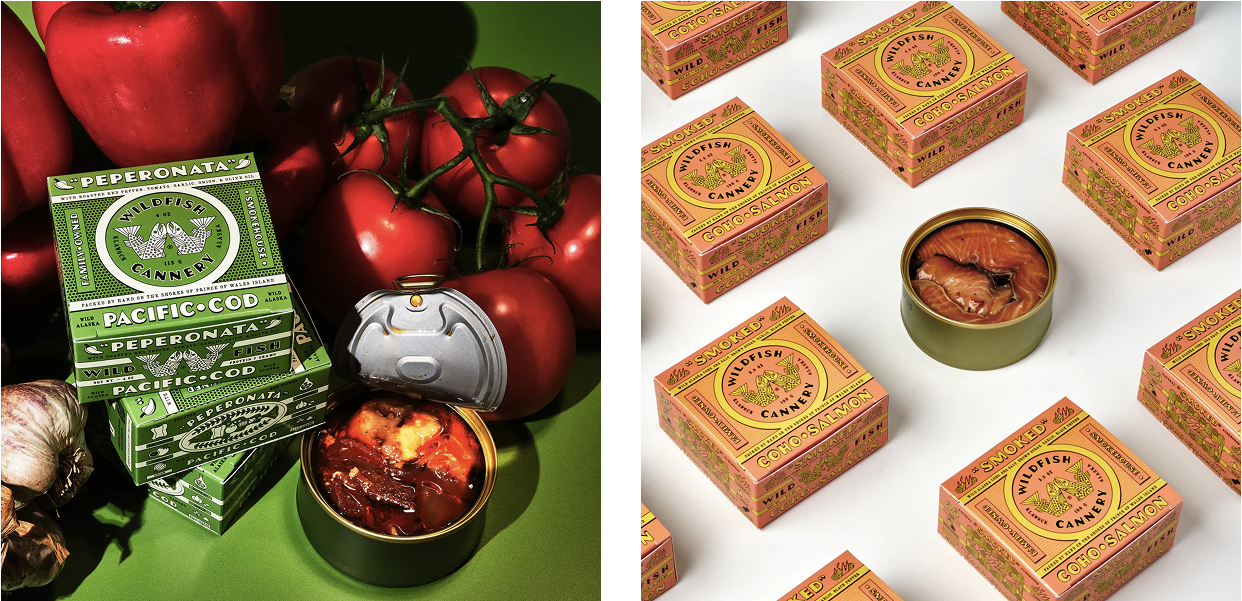Mathew Scaletta takes a chef's approach to tinned fish
The owner of Wildfish Cannery on recipe development, using less common fish, and bringing attention to detail to commercial canning.
If you enjoyed this issue, head to the bottom to like or comment so others can find it. Thank you!
Wildfish Cannery is an independent, family-owned fish cannery based in Klawock, Alaska. Mathew Scaletta took over the business from his grandmother in 2015 and has maintained the cannery’s commitment to the use of hand-harvested, hand-packed, sustainable seafood. His fine dining background means that they also offer interesting flavor combinations, sometimes using less common fish. I came across his products at a wine fair and they are *very good* — I’ve added a bunch of their tins to my pantry.
Matt and I chatted about his family’s business, recipe development, using less common fish, and bringing a chef’s attention to detail to canning.
Brianna Plaza: How did you get into the canning business?
Mathew Scaletta: I was born in 1984 and that same year, my father and grandfather purchased an old Alaska cannery site called the Steamboat Bay Cannery. It hadn’t been used for years and the intention was to use it for regular old fish processing and then convert it over to freezing so they could export. They did that for a while and at some point they sold it.
Around the same time, my grandmother started Wildfish to provide fish processing services to the locals and people coming to sport fish. She saw the need so she built a tiny fish processing building on her property in 1987.
I’d work there in the summers and when I was in college, I found that my fish processing experience parlayed really well into kitchens and food service. It was during that time that I noticed a lot of imported canned fish and restaurants throwing a tin of fish on the menu. It made me wonder why we aren’t doing that in Alaska with our fantastic seafood. We had Wildfish, but there was really no infrastructure for any sales. The idea stuck with me as I saw tinned fish becoming more and more popular.
In 2015, my dad and grandma gave me a call and were like, "Hey, we're old. Do you want to move to Alaska and take over the business?" I moved back and set a goal to become the first US-based gourmet tinned fish brand.
Pretty soon after I moved back, my grandmother passed away and I took over the cannery. So there I was with this idea of making US-produced tin fish a thing, and since then, it’s been grinding just to get to a point of an established brand. Since 2020, other companies got into the mix which has been awesome because for a long time I felt like I was alone. Alaska is one of the last places in the country that still has small, independent canneries.
Brianna Plaza: Why do you think there aren’t that many independent canneries left?
Mathew Scaletta: I think it’s consolidation like any other industry. Fisheries existed in coastal communities and were there to serve the maritime communities, and they just don’t exist anymore.
In places where there are strong fisheries, there are still some smaller independent canneries. Washington has a couple that service the tuna fishing fleet. I don't think there's anything on the east coast except for Island Creek, which opened a cannery in early 2025. They’re the first independent cannery to open on the East Coast in several years.
Brianna Plaza: How does your fine dining background help you work in the far less refined world of fish canning?
Mathew Scaletta: Working with food is all based on principles. You're trying to make the best thing you can and it’s going to be delicious with attention to detail. I apply those principles to fish canning, which especially in Alaska, that’s not always the case. A lot of the canneries here use the lowest grade fish. They’re producing literally thousands of cans in a day. There is no attention to detail. Not much thought goes into it other than how much of this can we produce and how cheap can we make it? My professional culinary training and that way of thinking definitely informs what we're doing here.
Brianna Plaza: How do you think about new product development?
Mathew Scaletta: It's all about what tastes good. We don’t have a formal system for product development, it’s a lot of oh, let’s throw this in a can and see how it tastes.
One of the things I think a lot about is the retorting [the process where food is packed into a container and then subjected to high heat and pressure in a retort to kill microorganisms and extend shelf life] process as a culinary technique. How does the intense heat and pressure interact with flavors?
The retorting process interacts with ingredients in different ways than other processes would. It’s similar to how different ingredients lend themselves to different cooking methods. I think about our products in the same way. How is the retorting and preservation process going to serve the ingredients and elevate them?
I’d like to think that the recipes that we’re developing are in service of being improved through the canning process.
Brianna Plaza: You use some less common fish. Why include those types of fish in your lineup?
Mathew Scaletta: We use them because they’re here. We’re really remote and very off the supply chain. We’re on an island, we don’t have jet service. All our food and materials come in on a boat, so what we have to work the fish that are caught here. I look at other fisheries that are established here and that are healthy, and that’s what we have to offer.
Some of the stuff comes about randomly. We did the lingcod product this year, and that came about because a fisherman had all this lingcod and didn’t have a market for it. It's just thinking about where we're at and if it makes sense.
Brianna Plaza: You recently switched packaging styles, how did you arrive at that decision?
Mathew Scaletta: When I first got to Wildfish, I had the equipment to do a six ounce can with no pop top. It’s a pretty serious investment to change that. In my business plan from 2016-2017, I had a whole section about we have to switch to a smaller can to 3-4 ounces because everything else on the store shelf is in that format.
It really did take a long time to finally get to the point where I felt comfortable making Wildfish what I had wanted it to be all along. Changes in tooling and branding are a major investment and we took our time to get to the point to change it, even if it had percolating for years.
For a long time, so much of our business was putting out fish for locals and commercial fishing fleets, so a bigger can was better. They don’t want to deal with 1,000 three-ounce cans, you know? Plus, the larger format and having no pop top made sense because you get a longer shelf life that way.
The seafood industry is in turmoil and prices are going up. We realized we had to reduce our canned size because if we would have stayed in a six-ounce can, most of our product line would have been over $20 and that would not work. Only the most die-hard tin fish are paying that much for a can of fish.







